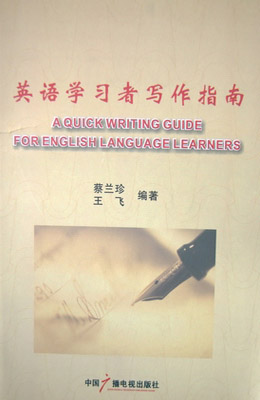There are many learners of English who have rich vocabulary resources and do well on grammar tests, yet for whom writing is a major problem. Writing requires learning to express a clear and full thought in addition to mastering language itself. There are many factors involved in writing.
It’s not easy to write an article in mother tongue, let alone in a foreign language. However, it
has been confirmed that learners’ writing ability can be cultivated so that they are able to write good and interesting articles in a foreign language.
Good writing depends not only on flawless grammar and a good vocabulary but also, and perhaps above all, on the quality of its content, and on writing skills such as gathering information, structuring the content selected, writing, revising, and testing their final documents. Learners will also benefit from learning specific formats relevant for their individual professional statuses/situations. All of these knowledge and skill demand a strict and full-scale training and guidance. With these factors in mind, the authors wrote the book The Quick Guide on English Writing to provide guidance for learners in English.
 
As a how-to book, it registered the following features.
1. Extensive coverage:
The book covers a variety of topics concerning English writing, which include the general knowledge of writing such as grammar essentials, grammar editing, mechanics noting, word choice, punctuation usage and paragraph arrangement. Advices are provided on Essay examinations and Argumentative essays. Moreover, professional writings and genres are discussed and analyzed in details, such as the research paper, letter writing, research proposal writing, report writing and questionnaire design. Therefore, the book satisfies appetites of learners in different levels and interest.
2. Strong guidance:
The book is an –easy- to- use guide to writing. It offers clear definitions of important concepts as well as helpful explanations of rules and principles for effective writing. The book also provides the section on using the library, including introduction to the resources of the college library and to electronic and online research. Guidance on extensive models of correct citation format is included, such as MLA Documentation, APA Style and other Documentation Styles.
3. Process Writing Orientation:
The book covers all stages of the writing process: generating ideas, drafting, revising, editing and proofreading, and is arranged in proper sequence and progress and advanced step by step. It begins with the most essential elements in English writing, such as how to use the correct structure forms, how to choose words and use them accurately, how to make sentences and organize a paragraph, how to use punctuation correctly. Then it concerns about how to make transition between sentences or paragraphs naturally and smoothly. Finally, it focuses on professional writings.
4. Latest Writing Material:
A quantity of the latest materials have been searched and selected in the library and on Internet. The book involves an attentive and enthusiastic research in English writing.
5. Students’ and professional example of different writings
Sufficient and carefully chosen students’ and professional examples are provided and establish expectations for learners’ writing performance. Meanwhile, corrections of errors and the way to correct them are shown in the examples.
6. Clearly Stated Learning Objectives:
Students are easy to find out what they are supposed to learn from each chapter.With the authors’ limit of experience and knowledge, there are definitely some mistakes in the book. The authors would greatly appreciate if the readers can find them out and correct them without hesitation.
教材目录 代表性章节 |


